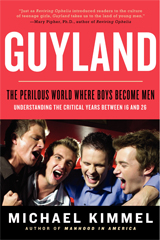
Thinking about moving conjures images of moving up—for a better job, a cooler city, or even that deluxe apartment in the sky. However, a recent article from USA Today paints a much different picture about the reasons people in the U.S. pack up and go.
The report sums up a new analysis of Census data presented by the US 2010 project under the leadership of Brown University sociologist John Logan. It confirms our worst suspicions about the Great Recession: more people are moving down into cheaper housing, having lost their jobs or taken pay cuts. From the article:
“Typically, over the last couple of decades, when Americans moved, they moved to improve their lives,” said Michael Stoll, author of the research and chairman of UCLA’s public policy department. “This is the shock: For the first time, Americans are moving for downward economic mobility. Either they lost their house or can’t afford where they’re renting currently or needed to save money.”
In the face of the data, maybe it’s time to stop humming the theme from “The Jeffersons” and start listening to the words of Billy Joel: “If that’s movin’ up,” well, we’re just “movin’ out.”



